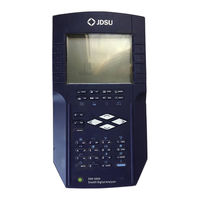Acterna SDA-5000 Manuals
Manuals and User Guides for Acterna SDA-5000. We have 2 Acterna SDA-5000 manuals available for free PDF download: Operation Manual, Getting Started
Acterna SDA-5000 Operation Manual (412 pages)
SDA Series Stealth Digital Analyzer
Brand: Acterna
|
Category: Measuring Instruments
|
Size: 2 MB
Table of Contents
Advertisement
Acterna SDA-5000 Getting Started (8 pages)
the SDA Stealth Digital Analyzer
Brand: Acterna
|
Category: Measuring Instruments
|
Size: 1 MB

